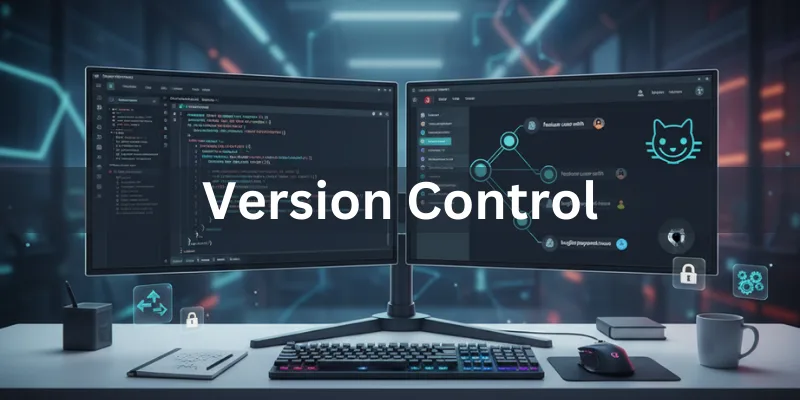
Version control is an essential tool in the world of full stack development. Whether you are working solo or in a team, managing changes to your codebase in a structured and trackable way is crucial. For those looking to build a solid foundation, enrolling in a Full Stack Developer Course in Trivandrum at FITA Academy can provide the practical skills needed to master these tools. In full stack projects, where both front-end and back-end systems evolve together, version control helps developers stay organized, efficient, and confident in their work.
What is Version Control?
A version control system captures modifications made to files throughout time. It allows developers to track modifications, revert to previous versions, and collaborate without overwriting each other’s work. This system is particularly important in full stack development, where codebases often span multiple technologies and frameworks.
Most developers use Git as their version control system of choice. Git tracks changes locally and allows syncing with remote repositories hosted on platforms like GitHub, GitLab, or Bitbucket. These tools make it easy to collaborate, review code, and manage large-scale development workflows.
Why Full Stack Developers Need Version Control
Full stack developers manage both client-side and server-side code. This means they often juggle multiple files, directories, and technologies at once. Aspiring developers, taking a Full Stack Developer Course in Kochi can help build the necessary skills to handle these challenges effectively. Without version control, even small mistakes can lead to hours of lost work or conflicting changes.
Version control provides a structured way to manage these complexities. It helps developers:
- Keep a detailed history of all changes
- Identify who made specific updates
- Revert back to previous states of the code when needed
- Work on new features without affecting the main application
In full stack projects, version control becomes the single source of truth. It keeps front-end, back-end, and even database configuration changes in sync across the team.
Benefits of Version Control in a Full Stack Workflow
Using version control offers many benefits, especially when integrated into a full stack workflow:
1. Improved Collaboration
In a team setting, version control enables numerous developers to simultaneously work on various sections of a project. For example, one developer can update the user interface while another works on the server logic. Modifications can be integrated into a common repository after they have been evaluated and validated.
2. Safe Experimentation
Version control lets developers create separate branches to test new features or fix bugs. These branches do not affect the main codebase until changes are reviewed and merged. This encourages innovation while reducing the risk of breaking the application.
3. Traceability
Every change made in a project is recorded with a timestamp and a description. This makes it easy to understand the evolution of the code. If you want to enhance your understanding, joining a Full Stack Developer Course in Pune provides practical training to excel in these important skills. If something breaks, developers can trace the issue back to a specific update and resolve it quickly.
4. Easy Rollbacks
Mistakes happen. With version control, rolling back to a previous version is simple and quick. This is especially useful during deployments, where a faulty update can be reversed without major downtime.
5. Integration with DevOps Tools
Modern version control systems integrate seamlessly with DevOps tools for testing, building, and deploying applications. This makes it easier to automate workflows and maintain consistency from development to production.
Best Practices for Using Version Control in Full Stack Projects
To get the most out of version control, full stack developers should follow a few best practices:
- Commit often: Frequent commits make it easier to track changes and fix issues.
- Write clear commit messages: Descriptive messages help others understand what each change does.
- Use branches: Separate branches for features, bug fixes, and releases help maintain a clean and organized workflow.
- Review code: Before merging changes, review the code to ensure quality and avoid introducing bugs.
Version control is not just a helpful tool; it is a core part of modern full stack development. It ensures that teams can work efficiently, maintain code quality, and respond quickly to changes. Whether you are building a small project or managing a large application, version control brings structure and stability to your workflow.
For those eager to advance their skills, enrolling in a Full Stack Developer Course in Chandigarh can provide comprehensive training on version control and other essential full stack technologies. Investing time in learning and applying version control will make you a better and more reliable full stack developer.
Also check: Lazy Loading in Full Stack Applications
